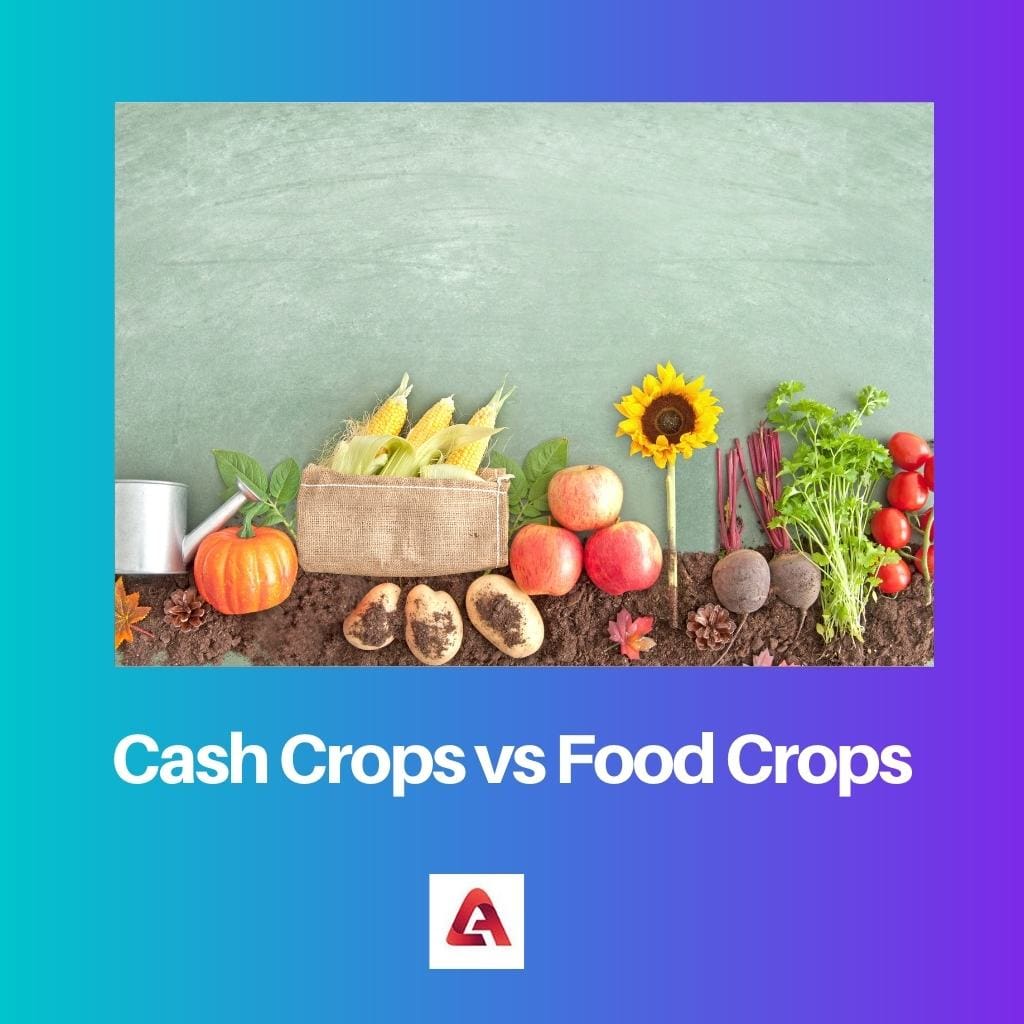Farming has been the ultimate source of food and economic growth since immemorial. With various farming practices, the world seems to have spread its legs in the farming sector.
The crops that are cultivated take a lot of effort and hard work. Various measures, machines and types of farming are undertaken to get high yields.
Many people earn their livelihood through farming only. The farmers grow crops, sell them and wait for the harvesting season to grow crops again, and this process continues.
The rapid increase in the population rate has put forward a challenge to food security. Food scarcity is one of the biggest issues in the world today.
To address this problem, several improved crop management strategies must come into play immediately.
The crops are produced in bulk and are of various types. Cash crops and Food crops are the two major types of crops.
Key Takeaways
- Cash crops are grown for commercial purposes and sold for profit, while food crops are grown for consumption by humans or animals.
- Cash crops are monoculture, while food crops are grown in mixed farming systems.
- While cash crops and food crops are important for economic and food security reasons, cash crop cultivation can have negative environmental and social impacts if not managed sustainably.
Cash Crops vs Food Crops
Cash crops are grown on a larger scale to generate income, including tobacco, cotton and coffee. Food crops are grown on a smaller scale for subsistence farming or local consumption and are grown to feed people and livestock, including grains, fruits, and vegetables.

Comparison Table
| Parameter of Comparison | Cash crops | Food crops |
|---|---|---|
| Market type | Sold out in local as well as international market. | Sold out in the local market only. |
| Capital requirement | A huge amount of capital is needed for a startup. | Much capital is not needed for a startup. |
| Farming technique | Complex farming is practised to get high yields. | The simple farming technique is enough. |
| Risks | Risk of soil degradation, crop quality and price are there. | Do not have many risks. |
| Crop productivity | High productivity is required, so strict measures are introduced. | The productivity requirement is low compared to the cash crops. |
| Policies | Specific policies are set for pricing and crop management. | There are no such policies. |
| Purpose of farming | Earning money is the ultimate purpose. | While survival is the ultimate purpose here. |
What is a Cash crop?
Otherwise known as the Profit crop, Cash crops are cultivated to gain profit. These are grown by the farmers and are then sold out in the local as well as the International market.
Various companies or parties purchase the crops by giving the required amount of money to the sellers. Tea, coffee, cocoa, cotton, sugarcane, spices etc., come under this category of crops.
The cash crops are mainly grown in regions with a temperate, subtropical or tropical climate. Rhodiola rosea is a cash crop grown in the arctic climate, which is an exception.
Regarding the cultivation regions, Africa, Australia, Italy, the United States and Vietnam are the countries where cash crops are cultivated.
Many farmers depend upon the production of cash crops to sustain their livelihood. With a higher productivity rate and high yields, cash crops face the issue of low tariffs and trade barriers globally.
Due to this, the issue of import and export arises, affecting some nations’ economic growth.
It would not be wrong to conclude that with suitable strategies, cash crops can offer even-handed growth if utilized to their full potential.

What is a Food crop?
The world’s major food supply comes from food crops. These crops are grown by the farmers for personal consumption and also to maintain national food security. Cereals, legumes, vegetables, fruits, herbs, etc., are food crops.
Food crops are cultivated in almost all types of climates across the world. After the crop production, these are sold out in the local markets only. These crops are the main source of human food as well as livestock.
The produce is low. Therefore, any specific policies are not needed to manage these crops. But there is a need to check pollution, licensing and over-harvesting of the crops for a better yield.
Environmental and climate changes pose a great threat to the rate of production throughout the world. To fight these destructive phenomena, developmental steps to predict the changes in the quality of food crops need to be undertaken.

Main Differences Between Cash Crops and Food Crops
- Cash crops are cultivated for commercial purposes or earning money for the sake of living, whereas Food crops are cultivated for domestic consumption.
- Cash crops are sold out in the local and International markets, but the food crops are sold in the local market only.
- The capital requirement in the case of cash crops is high as compared to food crops.
- Complex farming is done to get higher yields of cash crops, while food crops are cultivated through the simple farming technique.
- There are several risks involved in producing cash crops, whereas food crops do not face many risks.
- A high rate of crop productivity is the aim of cash crop production. But food crop production does not need a very high productivity rate.
- Several policies are set for managing cash crops, while the food crops need no such policies as productivity is lower.




